Archives
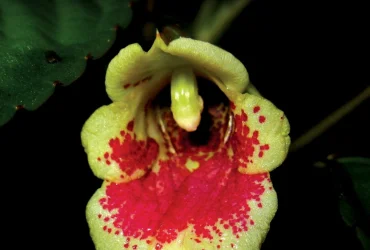 v4i2.79
v4i2.79ISSN: 1800-427X (print)
eISSN: 1800-427X (online)
DOI:10.47605/tapro.v4i2.79
Submitted date: 14 May 2012
Accepted date: 26 July 2012
Published date: 14 November 2012
Pp. 108–111.
Red Giant Flying Squirrel (Petaurista petaurista) in Assam, India
P.C. Ray, A. Kumar, J. Biswas, N. Das, A. Sangma, K. Sarma & M. Krishna
*E-mail: parimalcray@gmail.com
Red Giant Flying Squirrel (Petaurista petaurista) is widely distributed throughout Asia in habitat types including moist evergreen broadleaf forest, temperate forest, and scrub forest in both lowlands and montane areas. It is categorized as Least Concern on the IUCN Red List. Hitherto, no systematic studies have been done on P. petaurista in India. We assessed the density of individuals and habitat selection of this species in different habitat types experiencing various degrees of disturbance. We conducted our study in the Jeypore Reserve Forest (JRF; 108 km2) of Assam, India (27° 06’-27°16’ N, 95° 21’-95° 29’ E; 120-1600 m a.s.l), a rainforest patch of the Eastern Himalayan biodiversity hotspot region
Section Editor: Vincent Nijman
eISSN: 1800-427X (online)
DOI:10.47605/tapro.v4i2.79
Submitted date: 14 May 2012
Accepted date: 26 July 2012
Published date: 14 November 2012
Pp. 108–111.
Red Giant Flying Squirrel (Petaurista petaurista) in Assam, India
P.C. Ray, A. Kumar, J. Biswas, N. Das, A. Sangma, K. Sarma & M. Krishna
*E-mail: parimalcray@gmail.com
Red Giant Flying Squirrel (Petaurista petaurista) is widely distributed throughout Asia in habitat types including moist evergreen broadleaf forest, temperate forest, and scrub forest in both lowlands and montane areas. It is categorized as Least Concern on the IUCN Red List. Hitherto, no systematic studies have been done on P. petaurista in India. We assessed the density of individuals and habitat selection of this species in different habitat types experiencing various degrees of disturbance. We conducted our study in the Jeypore Reserve Forest (JRF; 108 km2) of Assam, India (27° 06’-27°16’ N, 95° 21’-95° 29’ E; 120-1600 m a.s.l), a rainforest patch of the Eastern Himalayan biodiversity hotspot region
Section Editor: Vincent Nijman
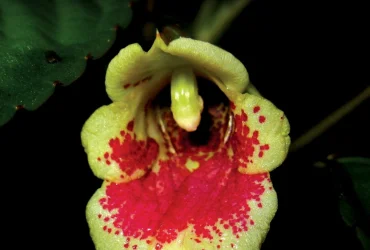 v4i2.78
v4i2.78ISSN: 1800-427X (print)
eISSN: 1800-427X (online)
DOI:10.47605/tapro.v4i2.78
Submitted date: 26 March 2012
Accepted date: 28 October 2012
Published date: 14 November 2012
Pp. 105–107.
Carapacial scute anomalies of star tortoise (Geochelone elegans) in Western India
Raju Vyas*
*E-mail: razoovyas@hotmail.com
The basic taxonomy and classification of reptile species and genera often use pholidotic characters. Despite that each species has a standard pattern, there are always deviant individuals in terms of scale number, shape, size, or color. Turtles are excellent models for the study of developmental instability because anomalies are easily detected in the form of malformations, additions, or reductions in the number of scutes or scales. The normal number of carapacial scutes in turtles is five vertebrals, four pairs of costals, and 12 pairs of marginals, a pattern known as “typical chelonian carapacial scutation”. Any deviation of vertebral, costal, or marginal scute numbers or their pattern represents an anomaly. Zangerl & Johnson (1957) documented scutation anomalies in 118 species of turtles belonging to seven families, with higher levels of carapace anomalies in aquatic species compared to semi-aquatic and terrestrial species.
Section Editor: Uwe Fritz
eISSN: 1800-427X (online)
DOI:10.47605/tapro.v4i2.78
Submitted date: 26 March 2012
Accepted date: 28 October 2012
Published date: 14 November 2012
Pp. 105–107.
Carapacial scute anomalies of star tortoise (Geochelone elegans) in Western India
Raju Vyas*
*E-mail: razoovyas@hotmail.com
The basic taxonomy and classification of reptile species and genera often use pholidotic characters. Despite that each species has a standard pattern, there are always deviant individuals in terms of scale number, shape, size, or color. Turtles are excellent models for the study of developmental instability because anomalies are easily detected in the form of malformations, additions, or reductions in the number of scutes or scales. The normal number of carapacial scutes in turtles is five vertebrals, four pairs of costals, and 12 pairs of marginals, a pattern known as “typical chelonian carapacial scutation”. Any deviation of vertebral, costal, or marginal scute numbers or their pattern represents an anomaly. Zangerl & Johnson (1957) documented scutation anomalies in 118 species of turtles belonging to seven families, with higher levels of carapace anomalies in aquatic species compared to semi-aquatic and terrestrial species.
Section Editor: Uwe Fritz
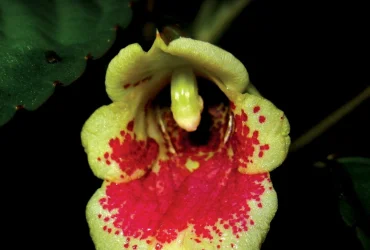 v4i2.77
v4i2.77ISSN: 1800-427X (print)
eISSN: 1800-427X (online)
DOI:10.47605/tapro.v4i2.77
Submitted date: 16 December 2011
Accepted date: 30 April 2012
Published date: 14 November 2012
Pp. 103–104.
Box turtles in and adjacent to Loktak Lake, Manipur – India
R.R. Singh* & K.J. Singh
*E-mail: princerobbin@gmail.com
Manipur is a biodiversity rich state located in the northeastern part of India that borders Myanmar. Situated within the western portion of the Indo-Burma biodiversity hotspot, the state has a large number of endemic and endangered species. The state is also prone to habitat destruction due to rapid clearing of forest for shifting cultivation, which is a common practice in the hill districts for agriculture and collection of firewood and timber. In the valley districts, the entire forest areas were converted to agricultural fields leaving only a few remaining green spaces, such as the sacred groves locally known as Umang Lais, small hillocks, and Keibul Lamjao National Park.
Section Editor: Uwe Fritz
eISSN: 1800-427X (online)
DOI:10.47605/tapro.v4i2.77
Submitted date: 16 December 2011
Accepted date: 30 April 2012
Published date: 14 November 2012
Pp. 103–104.
Box turtles in and adjacent to Loktak Lake, Manipur – India
R.R. Singh* & K.J. Singh
*E-mail: princerobbin@gmail.com
Manipur is a biodiversity rich state located in the northeastern part of India that borders Myanmar. Situated within the western portion of the Indo-Burma biodiversity hotspot, the state has a large number of endemic and endangered species. The state is also prone to habitat destruction due to rapid clearing of forest for shifting cultivation, which is a common practice in the hill districts for agriculture and collection of firewood and timber. In the valley districts, the entire forest areas were converted to agricultural fields leaving only a few remaining green spaces, such as the sacred groves locally known as Umang Lais, small hillocks, and Keibul Lamjao National Park.
Section Editor: Uwe Fritz
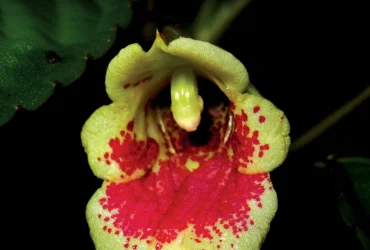 v4i2.76
v4i2.76ISSN: 1800-427X (print)
eISSN: 1800-427X (online)
DOI:10.47605/tapro.v4i2.76
Submitted date: 15 December 2011
Accepted date: 24 September 2012
Published date: 14 November 2012
Pp. 92–102.
Historical land-use patterns in relation to conservation strategies for the Riverstone area, the Knuckles massif, Sri Lanka: insights gained from the recovery of anuran communities
Senarathge R. Weerawardhena* & Anthony P. Russell
*E-mail: zoosrw@kln.ac.lk
Agriculture on the Indian sub-continent dates back to the fourth and third millennia BC, but only in more recent times did its intensity escalate in a major way. During the colonial era, the British established that the hilly areas of Sri Lanka were suitable for the rearing of coffee (Coffea arabica), for which much of the arable land of the island was extensively cultivated. Later, however, resulting from the severe impact of “Coffee Rust,” caused by the fungus Hemileia vastatrix, the coffee industry of Sri Lanka declined dramatically. Former coffee plantations were abandoned, but are still distinguishable as damaged areas. The truncation of coffee growing on the island created vacant room for another cash-crop.
Section Editor: Lee E. Harding
eISSN: 1800-427X (online)
DOI:10.47605/tapro.v4i2.76
Submitted date: 15 December 2011
Accepted date: 24 September 2012
Published date: 14 November 2012
Pp. 92–102.
Historical land-use patterns in relation to conservation strategies for the Riverstone area, the Knuckles massif, Sri Lanka: insights gained from the recovery of anuran communities
Senarathge R. Weerawardhena* & Anthony P. Russell
*E-mail: zoosrw@kln.ac.lk
Agriculture on the Indian sub-continent dates back to the fourth and third millennia BC, but only in more recent times did its intensity escalate in a major way. During the colonial era, the British established that the hilly areas of Sri Lanka were suitable for the rearing of coffee (Coffea arabica), for which much of the arable land of the island was extensively cultivated. Later, however, resulting from the severe impact of “Coffee Rust,” caused by the fungus Hemileia vastatrix, the coffee industry of Sri Lanka declined dramatically. Former coffee plantations were abandoned, but are still distinguishable as damaged areas. The truncation of coffee growing on the island created vacant room for another cash-crop.
Section Editor: Lee E. Harding
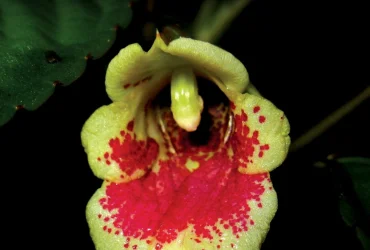 v4i2.75
v4i2.75ISSN: 1800-427X (print)
eISSN: 1800-427X (online)
DOI:10.47605/tapro.v4i2.75
Submitted date: 24 August 2012
Accepted date: 8 September 2012
Published date: 14 November 2012
Pp. 88–91.
The Nasalis Affair
Lee E. Harding*
*E-mail: harding@sciwrite.ca
Baron Friedrich van Wurmb (1781) is credited with the first description of the proboscis monkey, endemic to Borneo, which he named Cercopithecus [now Nasalis] larvatus. This was in a paper read to The Society of Batavia, modern day Jakarta, Indonesia, and later published in the Society’s Memoirs. But he was not the first.
Section Editor: Colin Groves
eISSN: 1800-427X (online)
DOI:10.47605/tapro.v4i2.75
Submitted date: 24 August 2012
Accepted date: 8 September 2012
Published date: 14 November 2012
Pp. 88–91.
The Nasalis Affair
Lee E. Harding*
*E-mail: harding@sciwrite.ca
Baron Friedrich van Wurmb (1781) is credited with the first description of the proboscis monkey, endemic to Borneo, which he named Cercopithecus [now Nasalis] larvatus. This was in a paper read to The Society of Batavia, modern day Jakarta, Indonesia, and later published in the Society’s Memoirs. But he was not the first.
Section Editor: Colin Groves
Hubungi Kami
The ultimate aim of the journal is to provide an effective medium for communication of the latest and best scientific information.
Copyright © 2020 Taprobanica. All Rights Reserved
Jasa Pembuatan Website by IKT




